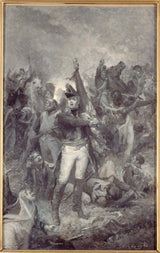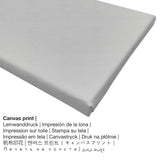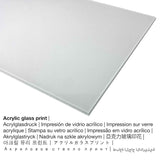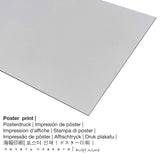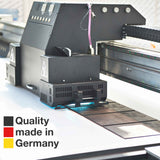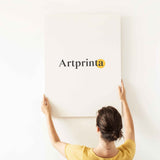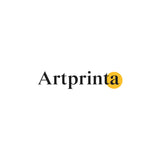Emile-Antoine Bayard, 1879 - Cambronne - mbipụta nka mara mma
Ụtụ gụnyere. Mbupu gbakọrọ na ndenye ọpụpụ.
Original artwork specifications by the museum (© - by Maison de Victor Hugo - Hauteville House - www.maisonsvictorhugo.paris.fr)
Illustration for an older version of Hugh Victor Hugo's novel "Les Miserables" Part "Cosette" Book I "Waterloo", Chapter XV "Cambronne", the design offers a heroic portrait of General Cambronne corresponding to the text: "The reader French wanting to be respected, the most beautiful word perhaps a French ever said it can not be repeated. Defense to file the sublime in histoire.À our peril, we violate this défense.Donc among all these giants, there was a titan, Cambronne.Dire this word, and then die, what's bigger? for it is to die than to want it, and it's not the fault of this man, so being fired, he survécu.L'homme who won the Battle of Waterloo, Napoleon is not routed, not folding Wellington at four, five desperate, not Blücher who has beaten the point; the man who won the battle of Waterloo is Cambronne.Foudroyer of such a word thunder that kills you, it's vaincre.Faire this response to the disaster, saying that fate, give this basis lion future, discard the reply to the night rain, the traitor Hougomont wall, the hollow road of Ohain, Grouchy delay in the arrival of Blücher, the irony being in the grave, ensure to stay standing after it has fallen, drown in two syllables the European coalition, offering kings those already known latrines Caesars, to the last words first by mixing the glory of France, close Waterloo insolently by Mardi Gras , complete Leonidas Rabelais, summarize this victory in a supreme word unpronounceable, losing the field and keep the story after the carnage have the laugh is immense. "
The work is the model illustration engraved by Gillot (by the method of the ets gillotage he inventor) to the volume of French-speaking Victor Hugo "Les Miserables" in Hugues edition, p. 53.Elle part of the inaugural clash Museum, in the hall of paintings from the first floor.
Ndị na-adịghị mma (V.Hugo)
In 1879 Emile-Antoine Bayard created the modern art masterpiece. The version of the piece of art had the following size: Ogologo: 46,3 cm, obosara: 29,3 cm e were kwa ihe-ọcha tee ya Mmanụ, Canvas (ihe). Ederede ihe osise mbụ bụ nke a: Signature - Bottom right "Emile Bayard". Ugbu a, ihe osise a dị na nchịkọta dijitalụ nke Maison de Victor Hugo - Ụlọ Hauteville. With courtesy of Maison de Victor Hugo - Hauteville House (ọha na eze).Besides, the work of art has the following creditline: . Moreover, alignment is in Eserese usoro ma nwee akụkụ nke 2: 3, nke pụtara na ogologo bụ 33% mkpụmkpụ karịa obosara.
Họrọ ụdị ebipụta nka kacha amasị gị
Anyị na-enye ihe dị iche iche dị iche iche na nha maka ngwaahịa ọ bụla. Họrọ nha na ihe kacha amasị gị n'ime nhọrọ ndị a:
- Mbipụta iko acrylic (nke nwere ezigbo mkpuchi iko n'elu): An print on acrylic glass, often referred to as a an art print on plexiglass, will transform your favorite original work of art into marvellous home decoration and forms a viable alternative to canvas and dibond art prints. Your work of art is being printed with state-of-the-art UV direct print machines. This creates the image effect of intense, sharp colors. The great advantage of a plexiglass fine art print is that sharp contrasts and also minor painting details will be identifiable with the help of the precise tonal gradation of the print. Our acrylic glass protects your chosen fine art print against light and heat for between 40-60 years.
- Kwaaji: The printed canvas, which should not be mistaken with a real artwork painted on a canvas, is a digital image printed on a cotton canvas material. A canvas creates a cosy and appealing look. Your canvas of this work of art will provide you with the unique chance of turning your own art print into a large size collection piece as you know from art galleries. How can I hang a canvas print on my wall? The advantage of canvas prints is that they are relatively low in weight, which implies that it is quite simple to hang your Canvas print without the use of additional wall-mounts. A canvas print is suited for any type of wall.
- Mbipụta akwụkwọ mmado (akwa akwa akwa): The Artprinta poster is a printed flat canvas paper with a slightly rough finish on the surface. Please note, that depending on the absolute size of the poster print we add a white margin 2 - 6cm around the painting in order to facilitate the framing with a custom frame.
- Mbipụta nke aluminom: This is a metal print manufactured on aluminium dibond with an outstanding depth effect. For our Print On Aluminum Dibond, we print the artpiece onto the aluminium composite white-primed surface. The direct UV print on Aluminum Dibond is the most popular entry-level product and is a stylish way to display fine art reproductions, because it draws focus on the whole artwork.
Banyere onye na-ese ihe
| Aha onye nka: | Emile-Antoine Bayard |
| Ọrụ: | onye na-ese ihe |
| Otu nka: | omenkà nke oge a |
| Ndụ: | 54 afọ |
| Afọ ọmụmụ: | 1837 |
| Amụrụ na (ebe): | La Ferte-sous-Jouarre |
| Nwụrụ n'afọ: | 1891 |
| Obodo ọnwụ: | Cairo |
Nkọwa ahaziri nke ọrụ nka
| Aha eserese ahụ: | "Cambronne" |
| nhazi ọkwa: | sere |
| Okwu mkpokọta: | nkà nke oge a |
| Century: | 19th narị afọ |
| Afọ okike: | 1879 |
| Afọ nka: | karịa afọ 140 |
| Agba na: | Mmanụ, Canvas (ihe) |
| Ogo nke ọrụ nka izizi: | Ogologo: 46,3 cm, obosara: 29,3 cm |
| Ederede nka nka izizi: | Signature - Bottom right "Emile Bayard" |
| Ụlọ ihe ngosi nka / ebe: | Maison de Victor Hugo - Ụlọ Hauteville |
| Ebe ngosi nka: | Paris, France |
| Weebụsaịtị ihe ngosi nka: | Maison de Victor Hugo - Ụlọ Hauteville |
| Akwụkwọ ikike nka: | ngalaba ọha |
| Site n'aka: | Maison de Victor Hugo - Ụlọ Hauteville |
Tebụl ihe
| Nkewa edemede: | nka nka |
| Mmeputakwa: | dijitalụ mmeputakwa |
| Usoro nhazi: | Mbipụta UV / dijitalụ |
| Mmalite ngwaahịa: | emere na Germany |
| Stockdị ngwaahịa: | mmepụta ihe na-achọ |
| Eji ngwaahịa a chọrọ: | nka mgbidi, ụlọ ihe osise nka |
| Ndepụta: | nhazi ihe osise |
| Oke akụkụ onyonyo: | 2: 3 |
| Nsonaazụ: | ogologo bụ 33% mkpụmkpụ karịa obosara |
| Akụrụngwa ị nwere ike ịhọrọ: | ígwè obibi akwụkwọ (aluminium dibond), akwụkwọ mmado (akwụkwọ kwaaji), mbipụta enyo acrylic (nke nwere ezigbo mkpuchi iko), mbipụta akwụkwọ. |
| Mbipụta kanvas (akwa akwa n'elu etiti ihe ndọtị) ụdị nha dị iche iche: | 20x30cm - 8x12", 40x60cm - 16x24", 60x90cm - 24x35", 80x120cm - 31x47", 100x150cm - 39x59" |
| Mbipụta iko acrylic (nke nwere ezigbo mkpuchi iko): | 20x30cm - 8x12", 40x60cm - 16x24", 60x90cm - 24x35", 80x120cm - 31x47", 100x150cm - 39x59" |
| Ụdị akwụkwọ mmado (akwụkwọ kwaaji) dị iche iche: | 40x60cm - 16x24", 60x90cm - 24x35", 80x120cm - 31x47" |
| Mpempe akwụkwọ Dibony (ihe alumnium) nha dị iche iche: | 20x30cm - 8x12", 40x60cm - 16x24", 60x90cm - 24x35", 80x120cm - 31x47" |
| Nhazi mbipụta nka: | ngwaahịa anaghị emebi emebi |
Ederede iwu dị mkpa: We try to depict our art products as closely as possible and to demonstrate them visually in our shop. Although, some tone of the print products, as well as the print result can diverge to a certain extent from the image on the monitor. Depending on your screen settings and the condition of the surface, not all colors will be printed 100% realistically. Bearing in mind that our art prints are printed and processed manually, there may as well be slight differences in the motif's exact position and the size.
Enwere ikike nwebiisinka ©, www.artprinta.com (Artprinta)

